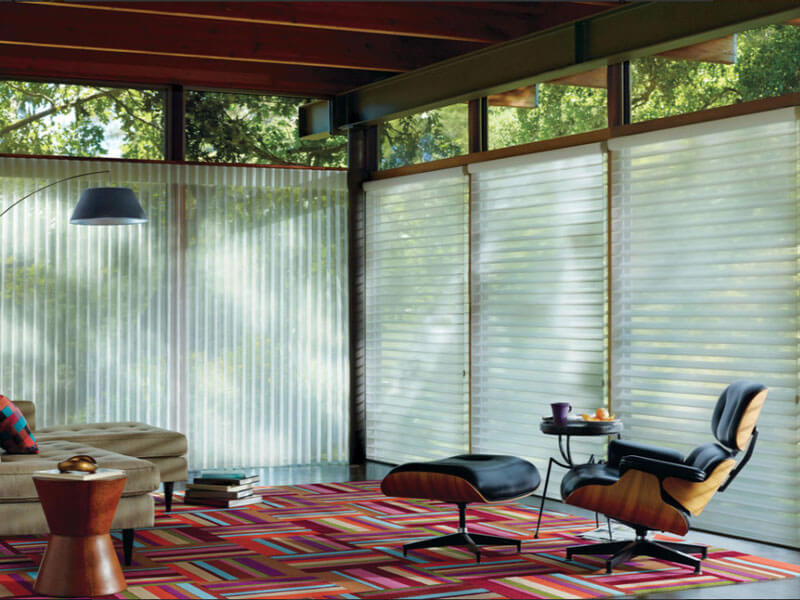Vertical Blinds vs. Horizontal Blinds

Shopping for blinds? If this is the first time you’ve ever looked at blinds, you might notice one key difference while you shop – you can get both vertical and horizontal blinds in almost every size and shape available. It’s a confusing choice, and for a first-time window covering purchasers, you may be left wondering, “What are the best blinds for my space?”
Fortunately, it’s fairly easy to understand the difference between vertical and horizontal blinds, and with this guide, you’ll easily be able to find the best blinds for your home.
The Basic Differences Between Vertical and Horizontal Blinds
At the heart of this difference is the fact that one choice includes vertical slats while the other has horizontal slats. The differences, though, actually go a bit deeper than that. While horizontal blinds come in a variety of materials – from faux wood blinds to typical aluminum and plastic mini blinds – vertical blinds tend to come with either fabric or plastic vanes. There are a few other key differences.
Horizontal blinds tend to come in smaller sizes than vertical blinds do. There is a limit to how long and wide horizontal blinds can be. Vertical blinds can be far bigger. Horizontal blind vanes also tend to be smaller while vertical blind vanes can come in sizes of up to several inches. While there are many differences between the two, there are also a number of similarities.
Both of these options offer a cordless variety for safety these days, and both come in a number of different colors and options to complement any room.
What are the Best Blinds for My Space?
So, what blinds will actually work for your home? It depends a bit on what you want. You’ll want to first consider the size. Siding doors typically use vertical blinds due to their sheer size. A small bathroom window, though, would likely use horizontal blinds. If either would work in a given space, you might want to consider the direction of the sun on that window. Vertical blinds are usually used when the window faces east or west.
Horizontal blinds are usually placed on windows that face north and south. The reason for this is simple. They can be adjusted to better match the angle of the sun. Privacy should also be a consideration in this equation. Vertical blinds tend to allow a bit more light through, and if you bump into them, they can remain open slightly. Horizontal blinds, on the other hand, offer total control.
Making the Choice
Still not sure which might be right for your space? Contact us today. With free consultation sessions, we’ll help you find the right choice for your home.
